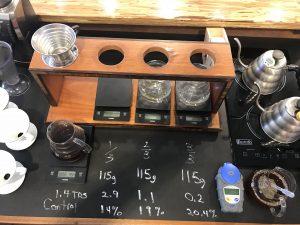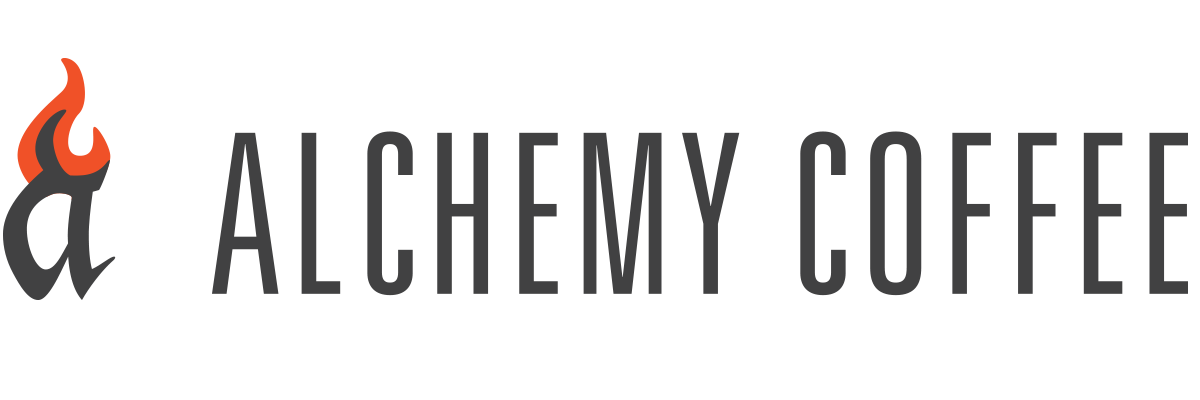One of the most common things we hear from people who are just starting to get into making better coffee is, ‘what can I do to brew a stronger cup’? When we ask them how they’re doing it, they are usually doing things that will lead to over-extraction instead of higher concentration. We generally steer people into the ‘golden ratio’ of 60g of coffee for every 1L of water to start, and then discuss what’s happening, pour by pour, in that brew.
Let’s start by delineating between extraction and concentration. Extraction is how much of the coffee that you start with finishes in your cup. For our standard V60 pour-over, we use a dose of 24g of coffee to 400ml of water. While we brew, we ‘extract’ ~4.8g, or 20% of the coffee. The goal is to extract 18-22%. Any less and you don’t get what you want out of the beans. Any more and you pull out the harsh and bitter notes that you won’t enjoy and will distract from the coffee. Concentration is how much of your final cup is coffee (e.g. dissolved solids). Our output is a 350ml cup (50ml stays in the grounds). That cup contains 4.8g of dissolved coffee solids, representing 1.35% of the cup (the rest being water).

With that said, the extraction rate is not a straight line. When you’re brewing most pour-over or drip methods, almost all of the extraction (97.5%) occurs during the first 2/3 of your pour. The last 133ml that comes through is almost entirely diluting your cup, effectively serving to simply reduce the concentration from 2% down to the more palatable 1.35%.
So, now that you understand what is happening, you can control your output in an intentional manner. If you’d like a ‘stronger’ brew, cut back on some part of the last 1/3 of the pour. It’ll range from a high of 2% Total Dissolved Solids (TDS) down to the ideal 1.35% TDS.

